Gomantong Caves (Gua Gomantong) is the largest cave and the most important source of edible birds’ nest in Sabah. The cave is located in 3,297-Hectares Gomantong Forest Reserve of Kinabatangan district, about 85 KM away from Sandakan city. In fact, Gomantong Caves is a limestone cave system consists of 9 caves, and the two largest caves are Simud Putih (White Cave) and Simud Hitam (Black Cave). You can see the map of cave complexes below:
Gomantong Cave is managed by Sabah Wildlife Department, and Sumid Hitam cave is open for public from 8am to 6pm daily. The entrance fee is RM5 (≈USD1.70) for Malaysian adult and RM30 (≈USD10) for foreign visitor. For visitors who want to explore Sumit Putih cave, they need to get a permit and climb 30 minutes of steep hill to reach there.
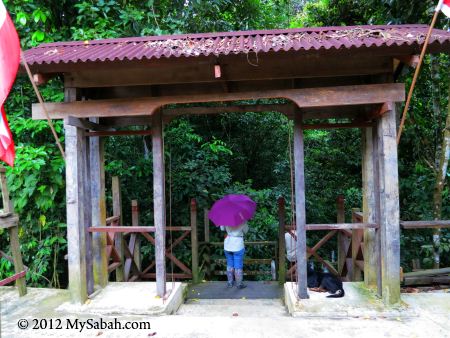
For normal tourists, the smaller and more accessible Sumid Hitam cave is a better choice. The wooden boardwalk to this cave will take you less than 10 minutes. You will pass through the dense trees of Gomantong rainforest, and spot orangutan or red-leaf monkey if it’s your lucky day.
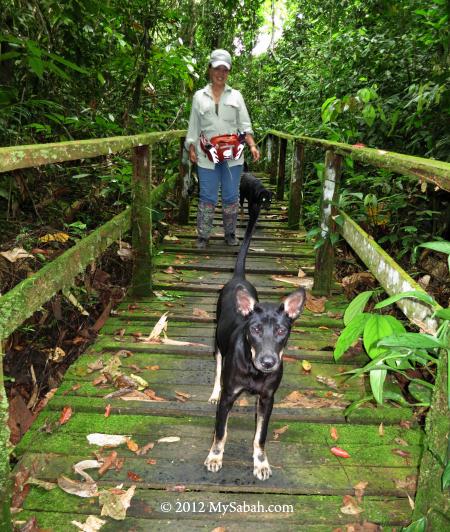
We were “escorted” by a group of dogs to the cave, haha. A few planks on the boardwalk have rotten or gone, so watch out for the holes. Other than this, it’s a leisure walk.
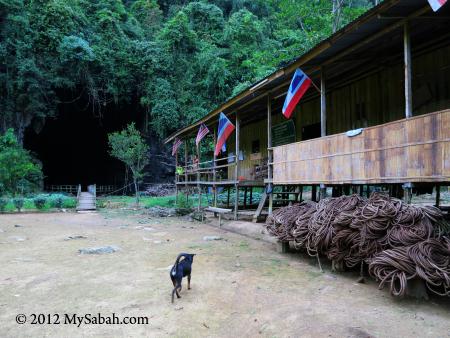
Very soon we reach the Gomantong Cave (Sumid Hitam). We saw some rolled-up ropes at the workers longhouse. During harvest seasons for birds’ nest, the collectors will stay here and guard the cave.
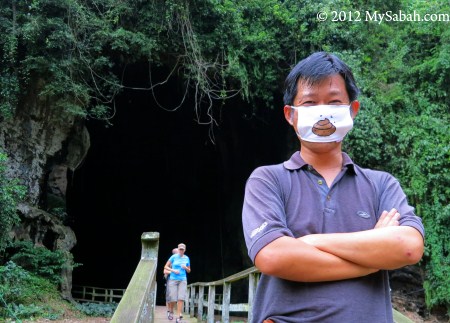
Before I entered the cave, I already smelled the strong odor of amonia from bird and bat dropping. Fortunately I was well-prepared LOL.
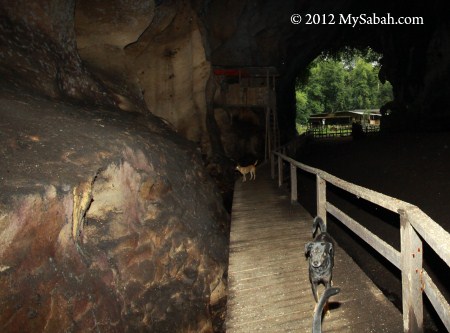
The friendly dogs also followed me into the cave. The raised boardwalk in the cave keeps visitors from deep layer of guano and creepy cave bug, which I’ll show you later. The cave is really dark so you better bring a torch light with you. Though the cave is very dark, it’s a lively and busy world. The cave amplified the squawks of thousands of swiftlet and bat, and millions of bugs were crawling everywhere.
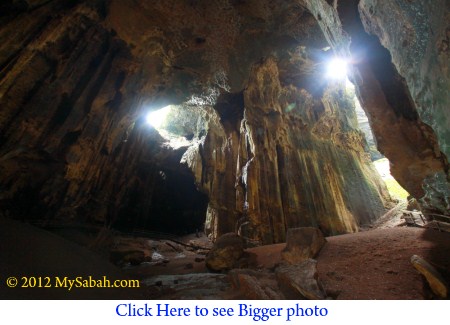
When my eyes got used to the dim environment, I started to see the vastness of Gomantong Cave. The cave is 90 Meters in height.
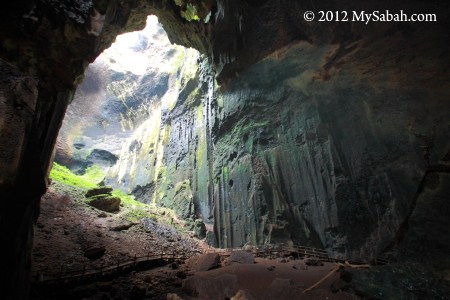
See the boardwalk in photo above? It looks so small. Now you know the scale of the cave.
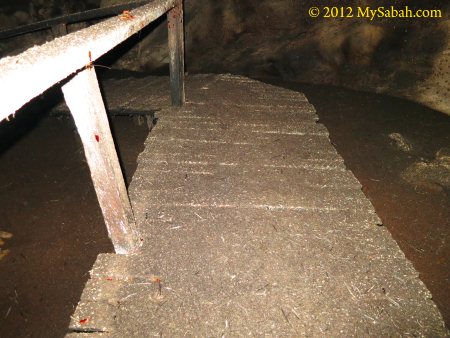
The thick layer of guano also makes the boardwalk slippery. Watch your steps. Don’t look up either. Do you know your mouth will open when you look up? Then the bird poo will fall into your mouth, hahaha! Seriously, do wear a hat in the cave.
Bird’s Nest Soup
To most people, this cave is smelly, dirty and warm. To some, Gomantong Cave is a filthy gold mine due to its highly-priced bird nest. Since the 13th century, China traders have been buying birds’ nest from here, for making of bird nest soup, a delicacy for nobles and royal family. Some China emperors may had tasted the bird’s nest from Gomantong. A funny description by Chinese for an upstart is “he rinses his mouth with bird’s nest and shark fin soup”.
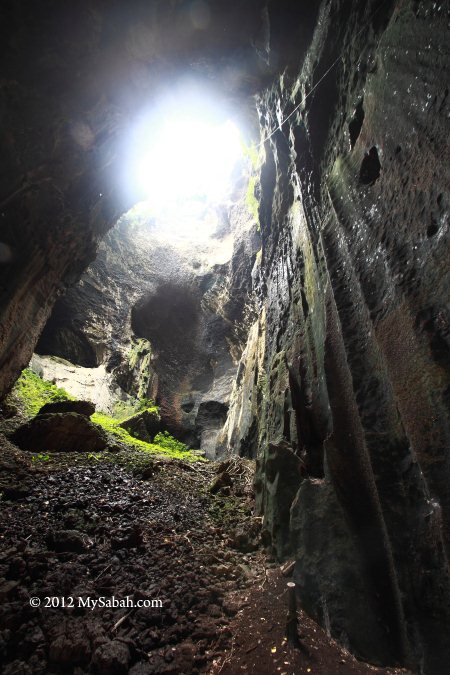
Even today, bird nest soup is an expensive cuisine. As China people are getting affluent, demand always exceeds supply. Someone even builds “swiftlet hotel” to farm for birds’ nest. However, edible bird nest from the caves is still considered as the best grade by consumers, as it contains minerals. Farmed bird’s nest is softer and disintegrates very fast after being cooked for a long time.
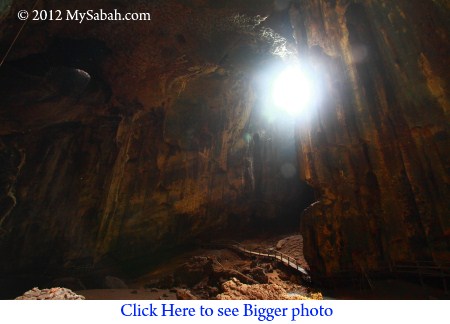
Whatever, research says that bird nest is just swiftlet saliva consists of water-soluble glyco-protein. Bird’s nest contains no secret ingredient to make you look younger. If women want to stay young, just eat healthy food and exercise regularly, a far more cheaper option. If a lady tells you that bird nest works for her, she is just showing off her wealth. If you still think saliva is good for you, I can sell you my saliva for half price, as it makes no difference.
Harvesting Edible Bird’s Nest
For conservation and sustainability of swiftlet population, the birds’ nest of Gomantong Caves is only harvested twice a year, i.e., Feb-Apr and Jul-Sep. You may see collectors at work if you visit during these months.
Two types of birds’ nest are harvested in Gomantong:
- White Nest of Edible-Nest Swiftlet (Aerodramus fuciphagus): the most expensive bird nest (about USD2,000 per KG), mainly swiftlet saliva. More abundant in Sumid Putih Cave.
- Black Nest of Black-Nest Swiftlet (Aerodramus maximus): more common but only priced at 20% of white nest, due to excessive impurity such as feather and plant materials in nest, labor-intensive to clean.
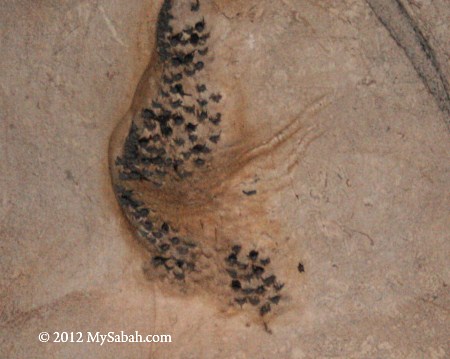
The swiftlet is not stupid. It builds its nest high on the ceiling of the cave. Swiftlet is an amazing bird. Not only people want to taste its saliva, it can fly so well that it can mate in flight. The echo-locating ability of these swiftlet allows them to navigate in cave and find their nests in total darkness. However, its sonar is not as accurate as bat hence not good enough to hunt for insects at night.
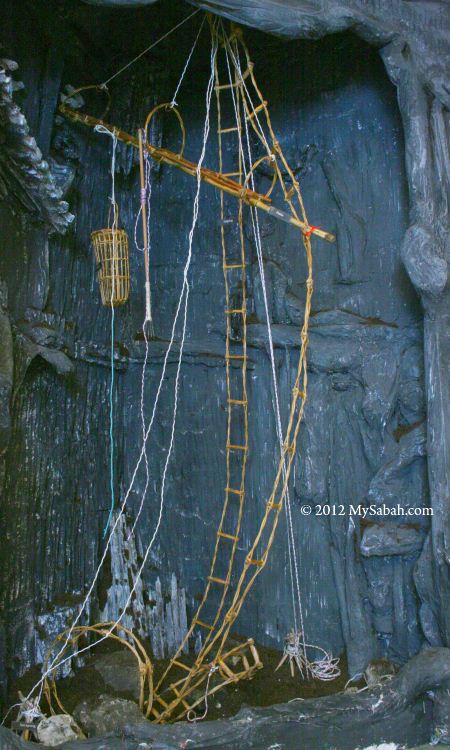
To harvest bird nests about 100 Meters above ground, the workers use the traditional setup in photo above.
Basically it’s a flimsy climbing structure supported by ropes, rattan ladders and bamboo poles. The workers risk their lives by climbing to the top, scratch the bird nest from the wall and put it in basket. Accident does happen sometimes, and in worst case, they fall and die in deep shit (guano).
The Ecology of Cave
Cave is a lightless world with unique ecology. Besides the noisy birds and bats, there are many ugly creatures call Gomantong their ideal home. Cave is the worst nightmare for Entomophobia (bug phobia).
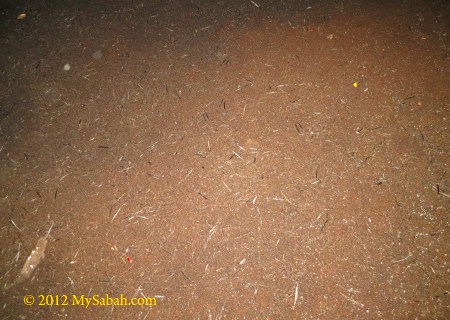
The cave ecosystem is powered by shit guano of swiftlets and bats. After thousands years of accumulation, the guano is a few feet deep and becomes the all-you-can-eat food source of cave residents. FYI, this manure makes good fertilizer.
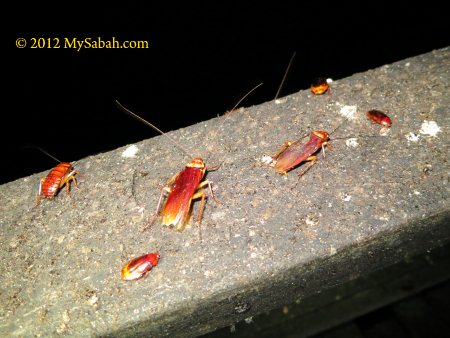
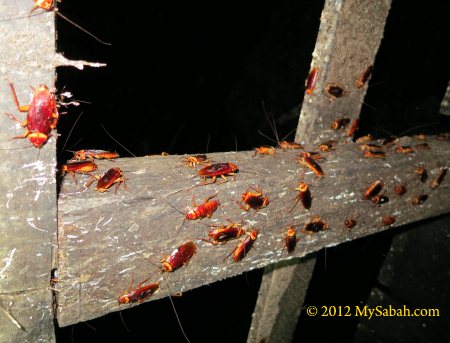
The cave floor, even the boardwalk, is carpeted by millions of cockroaches. They feed on the guano, and occasionally, the fallen fledgling. Sound bad but they help to clean up the mess, with dung beetles.
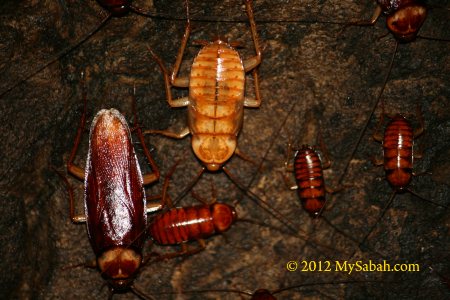
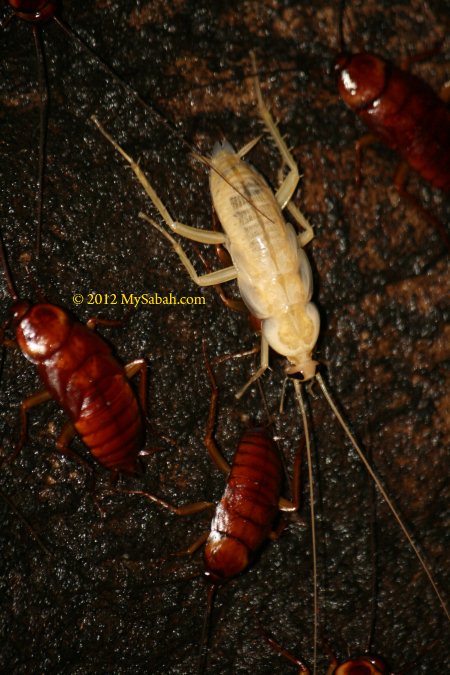
Because of the darkness, being colorful is pointless. Over time, some cockroaches lose their pigment and evolve to white color. Aren’t they cute?
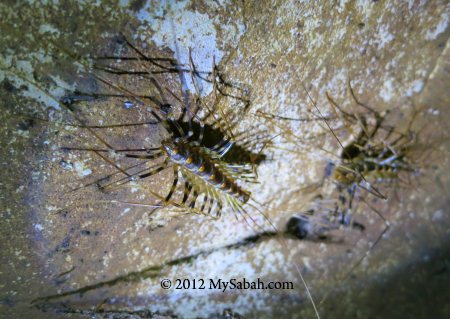
The wall gets venomous cave centipedes (or Scutigera Centipede) everywhere. Their bites are as nasty as their look, and no other creatures dare to stay near them, so don’t lean on the cave wall. They hate light and fled into darkness, seconds after my torchlight beamed on them.
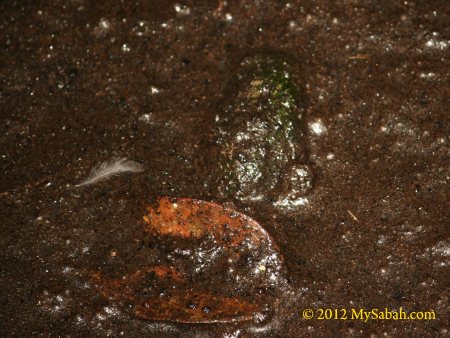
Pic: can you spot the crab? Many crabs live in guano pool here.
I hope I don’t scare you more, when I say racer snakes and giant centipedes also live in Gomantong Caves. Well, freaks just like to live together.
Bat Swarm
A least-known feature of Gomantong Cave is its bat swarm during dusk, when 2 millions bats fly out of the caves to start their day. Though the scale is not as spectacular as Mulu in Sarawak, the show is still quite a treat.
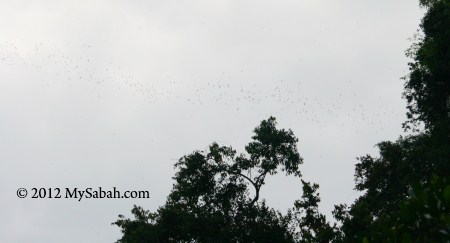
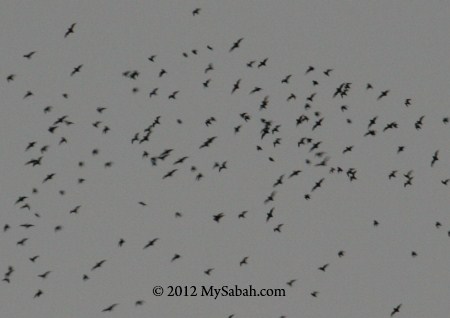
Just wait outside the cave around 5:30pm (they may not come out in rainy day). I saw wave after wave of bat swarms flying across the sky. If you want to see bat swarm up-close, the best spot is Sumid Putih Cave, where millions of bats flying just next to you, swarm after swarm.
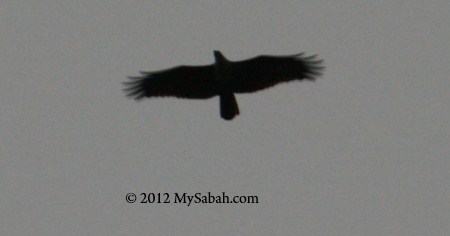
I was not the only one waiting for the bats. Their predators also know this. When the bat swarm starts, a few Bat Hawks will prey on the bats. Other raptors such as Wallace’s Hawk Eagle and Crested Serpent Eagle also join the hunt. Many birdwatchers come to Gomantong for this action scene, after they see other birds such as kingfishers, leafbirds and flycatchers in forest nearby.
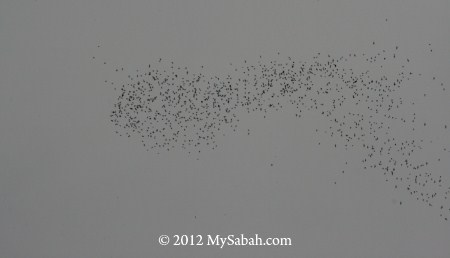
Gomantong Caves is a public park and very accessible. You only need to drive 1.5 hours from Sandakan to there on a paved road. The only problem is there is no bus going there. If you don’t want to hire a taxi or tour guide, you can rent a car and go there. Below is the location map:
View My Sabah Map in a larger map
Photos taken in Sandakan, Sabah, Malaysia Borneo
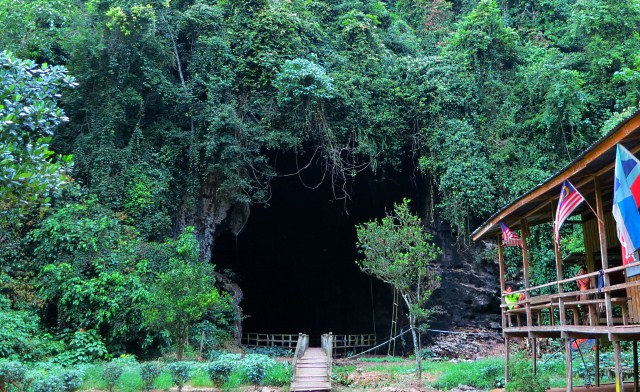
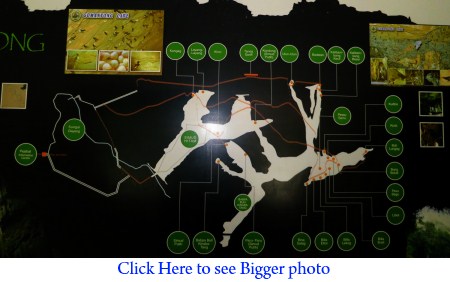

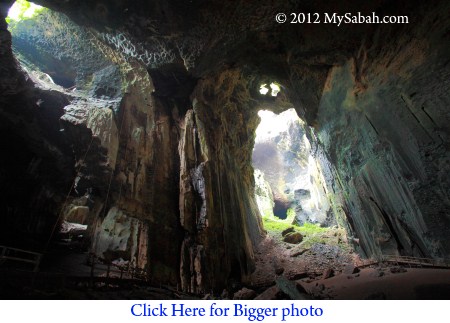

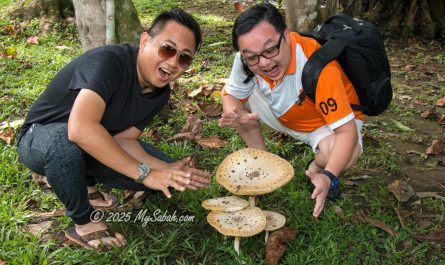

Another place that I miss returning to. I didn’t get to see the harvesting in any of my visits so I’ve got solid reason to come back to Gomantong for.
I’ll go back there too. I went at the wrong time for lighting and very likely I’ll climb to Sumid Putih next time.
Hi Mr.! Seronok sangat baca tulisan tuan. Asalnya tadi saya baca tentang Madai-Baturong Forest, terus ke tajuk/post2 tuan yang lain. Rasa terhibur dan senang faham pula walaupun I’m not very good in English.
Ada satu saya nak tanya tuan, untuk saya yang takut bila nampak anjing ni ada tips tak? Saya tak kuat lari as I’m OKU (physical). Tolong share tips ye tuan… planning to solo ride in Sabah Sarawak this August 2024.🦾
Terima kasih bos atas kata-kata positif anda. Apabila urus dengan anjing, yang terbaik adalah menjaga jarak, biarkan mereka dan jangan membuat kontak mata. Bawa sahaja sebatang tongkat untuk perlindungan. Biasanya, saya tak nampak banyak anjing di kampung Muslim, jadi mereka bukan masalah di kawasan Sandakan dan Kunak.